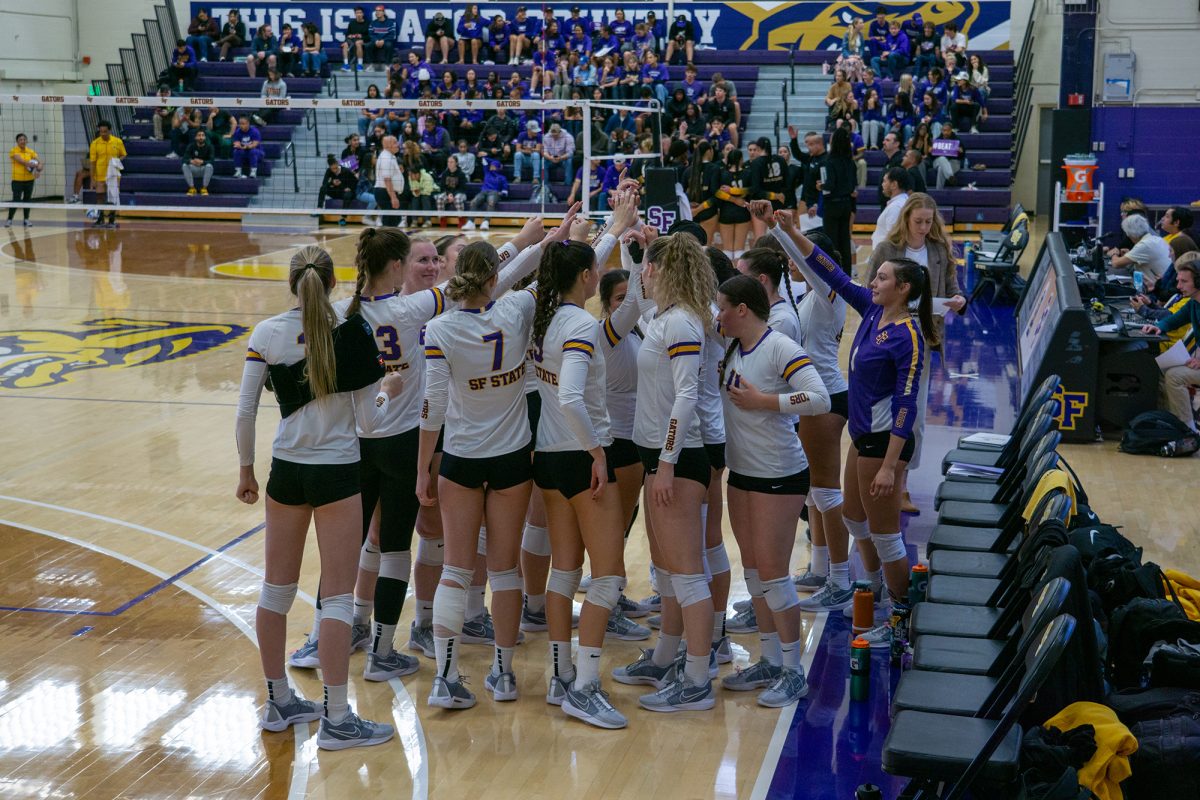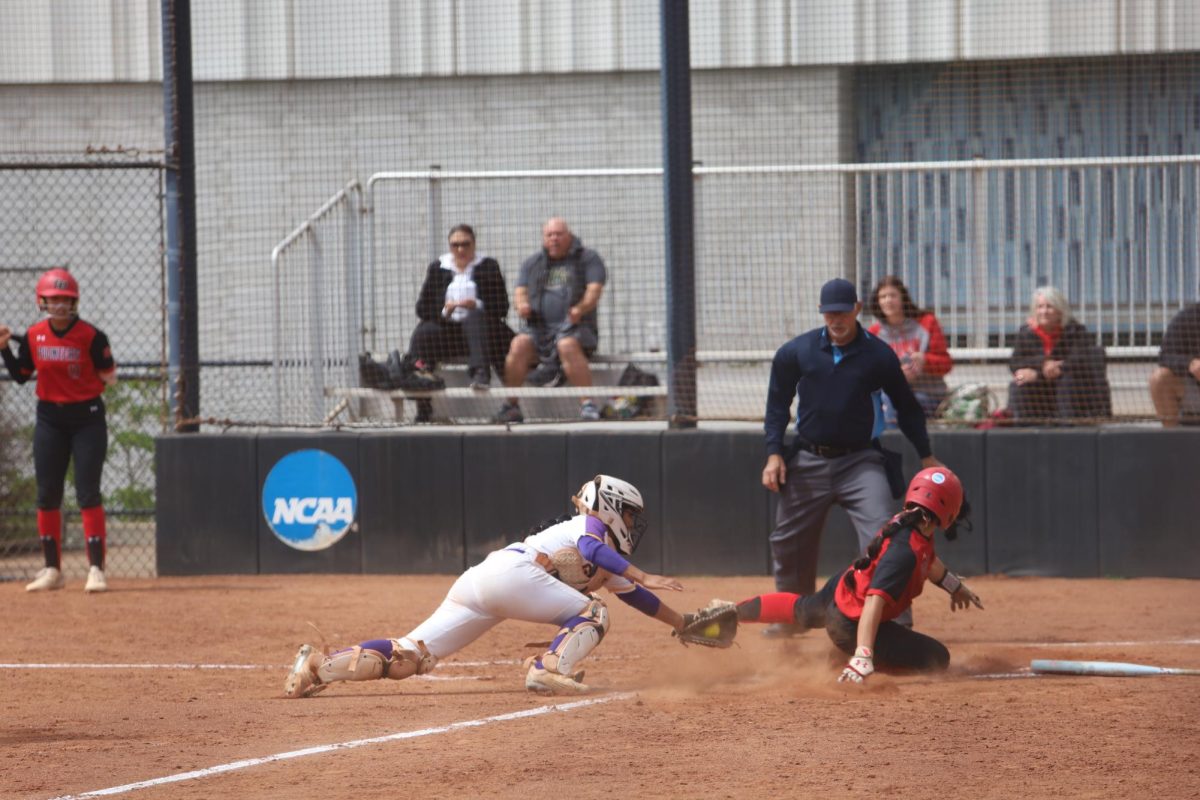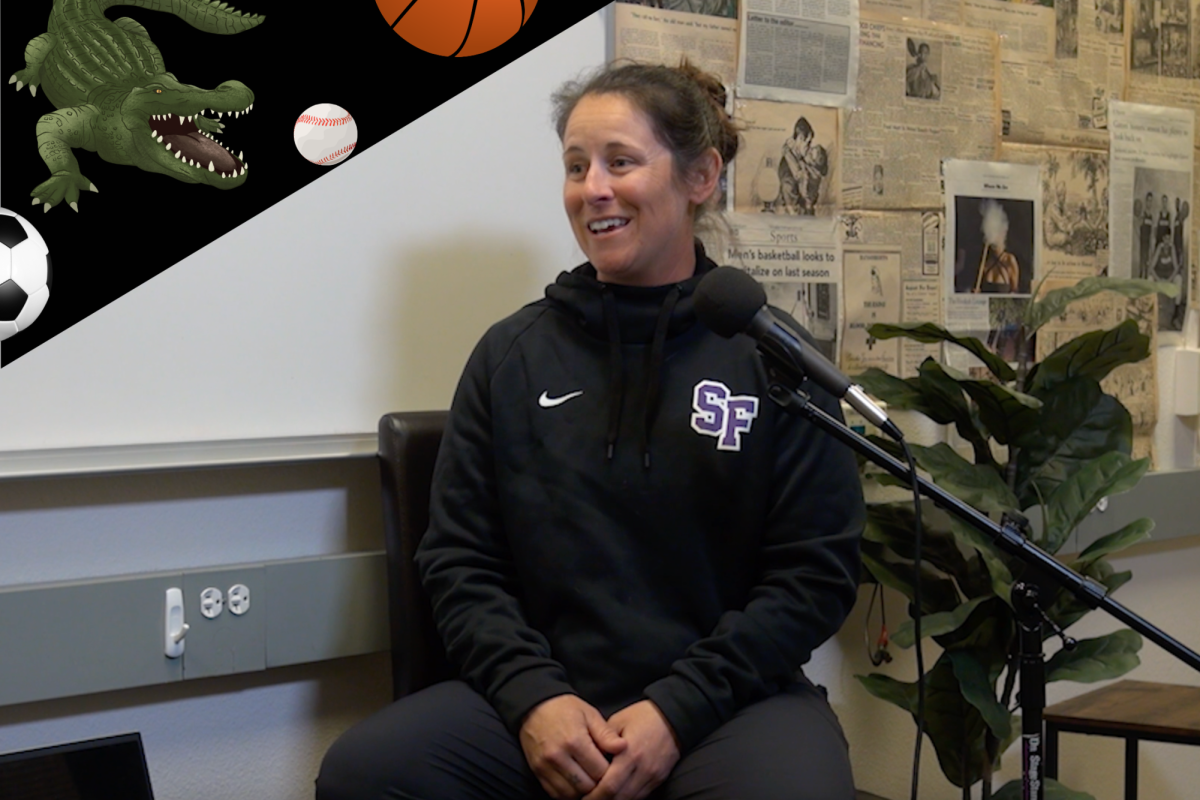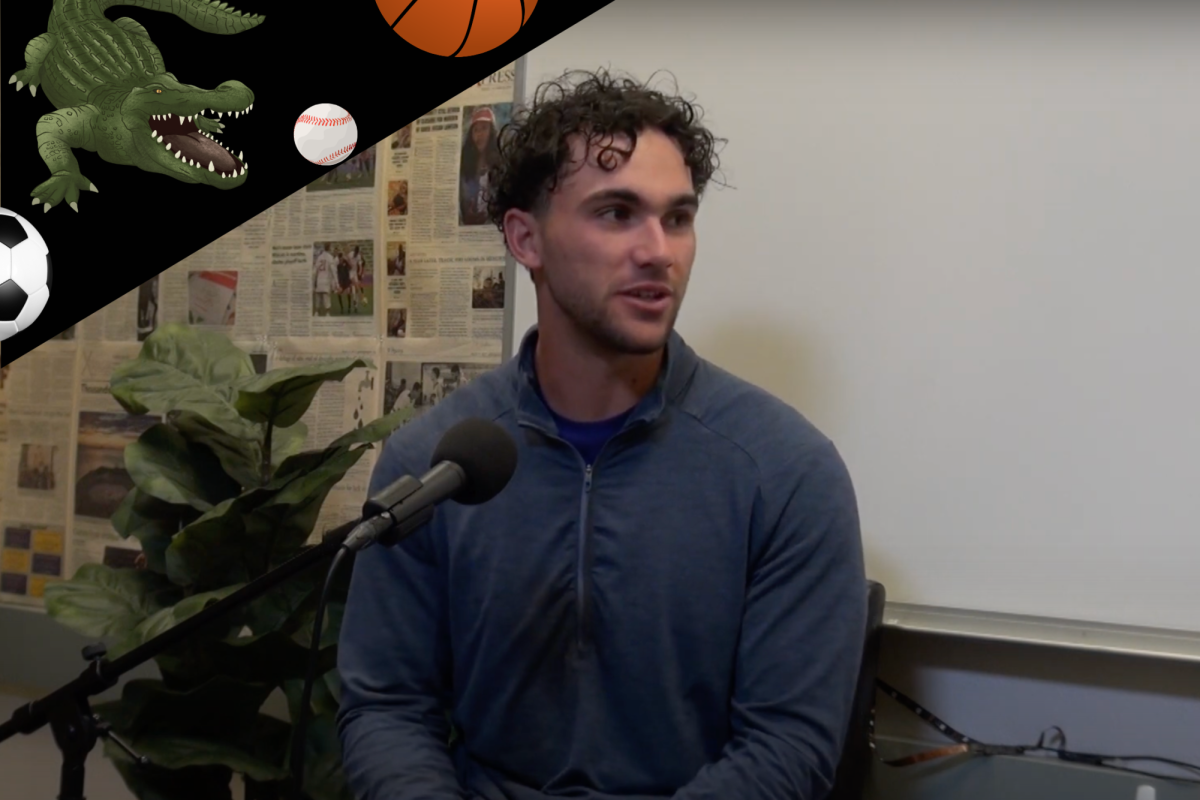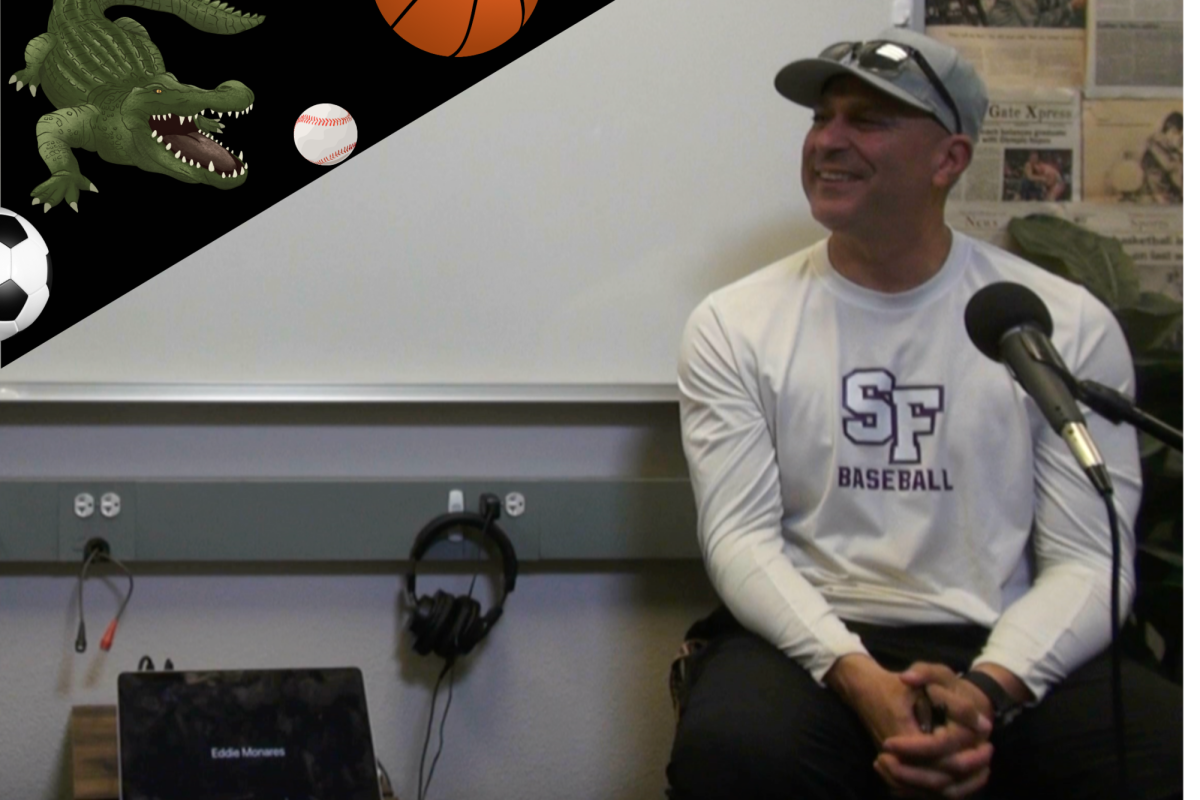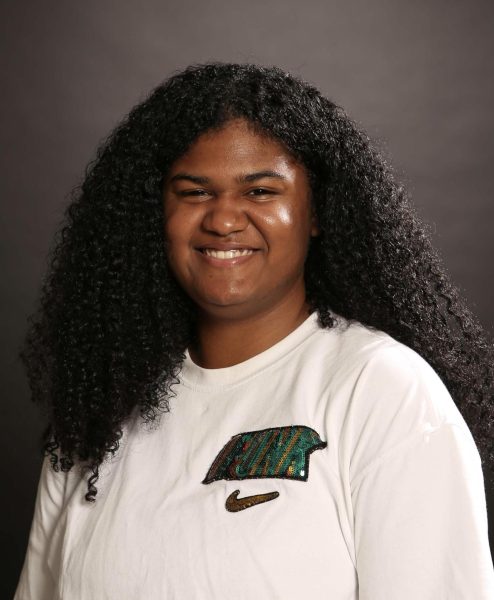Participating in college sports is a goal that propels the lives of student-athletes in various ways, one they strive toward if they are dedicated to competing in their respective sports.
When most think of college sports, they more than likely think of the big schools like Duke University, Notre Dame or Texas A&M University because of a storied tradition of having successful athletic programs.
According to the National Center for Education Statistics, there are 1,625 public four-year universities nationwide. Of those universities, 12 reside in California and are also in the California Collegiate Athletic Association (CCAA). According to the CCAA website, the league is home to 447 student-athletes. San Francisco State University has been a part of the CCAA since the 1998-99 academic school year.
Although the Bay Area is known to be a sports hub in its own right, let alone San Francisco, the SFSU athletics scene on campus is not as prominent for various reasons. Compared to nine schools in the same conference – looking at the budget and other aspects –– SFSU athletics is just as unique as the city it sits in.
The Budget 2018-2019
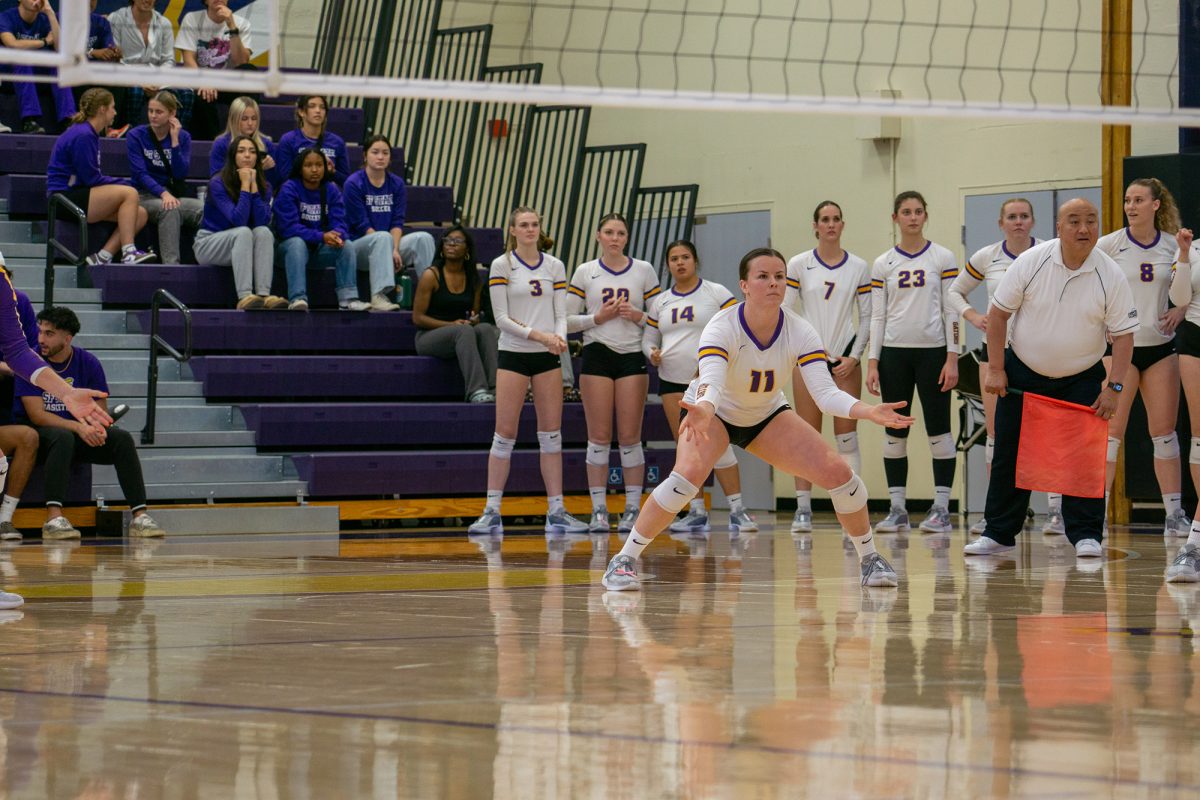
Statistics were derived from the budget of the 2018-2019 academic school year because of budget changes due to COVID-19.
In terms of the budget, SFSU is in a unique place. It had the second-to-highest enrollment in the CCAA – SFSU’s enrollment at the time was 21,895. The university invested the lowest amount of money into its athletics department in the conference at $121,553.
SFSU receives one of the lowest amounts of financial aid for student-athletes, including scholarships, grants, or other forms of financial assistance, for its size among institutions.
SFSU received $773,714 in funds, California State Los Angeles’s enrollment was 19,534 but received $1,280,515 in student aid. Stanislaus State is one of the lowest enrolled universities in the conference at 7,342 but received $40,036 more.
For recruiting expenses, SFSU spent the second-highest in the conference at $63,355 for the 2018-2019 academic year. Recruiting expenses include ––but are not limited to –– lodging, meals, telephone use and transportation for both recruits and personnel engaged in recruiting, and other expenses for official and unofficial visits.
SFSU spent nearly the same amount as the second-to-lowest-enrolled school in the conference. Cal State Monterey Bay, with an enrollment of 5,782, spent $68,681.
Operating expenses are all expenses an institution incurs attributable to home, away and neutral-site intercollegiate athletic contests –– commonly known as game-day expenses –– for lodging, meals, transportation, uniforms and equipment for coaches, team members and support staff.
SFSU’s total operating expenses for both men’s and women’s teams was $1,071,705. Three other universities spent over $1 million –– Cal State Monterey Bay, Sonoma State and Stanislaus State. The rest averaged around $800,000.
In terms of revenue for both men’s and women’s teams, SFSU had the lowest in the conference at $2,983,610. Revenue includes appearance guarantees and options, contributions from alumni, institutional royalties, signage and sponsorships, sports camps, state and government support, student activity fees, ticket and luxury box sales and any other revenues attributable to intercollegiate athletic activities.
Out of the three bigger campuses in the conference, which are just below and over 20,000 students, SFSU had the lowest revenue. Sonoma State has about 15,000 fewer students but made almost over $1 million more than SFSU in revenue for the 2018-2019 academic year at $3,811,737.
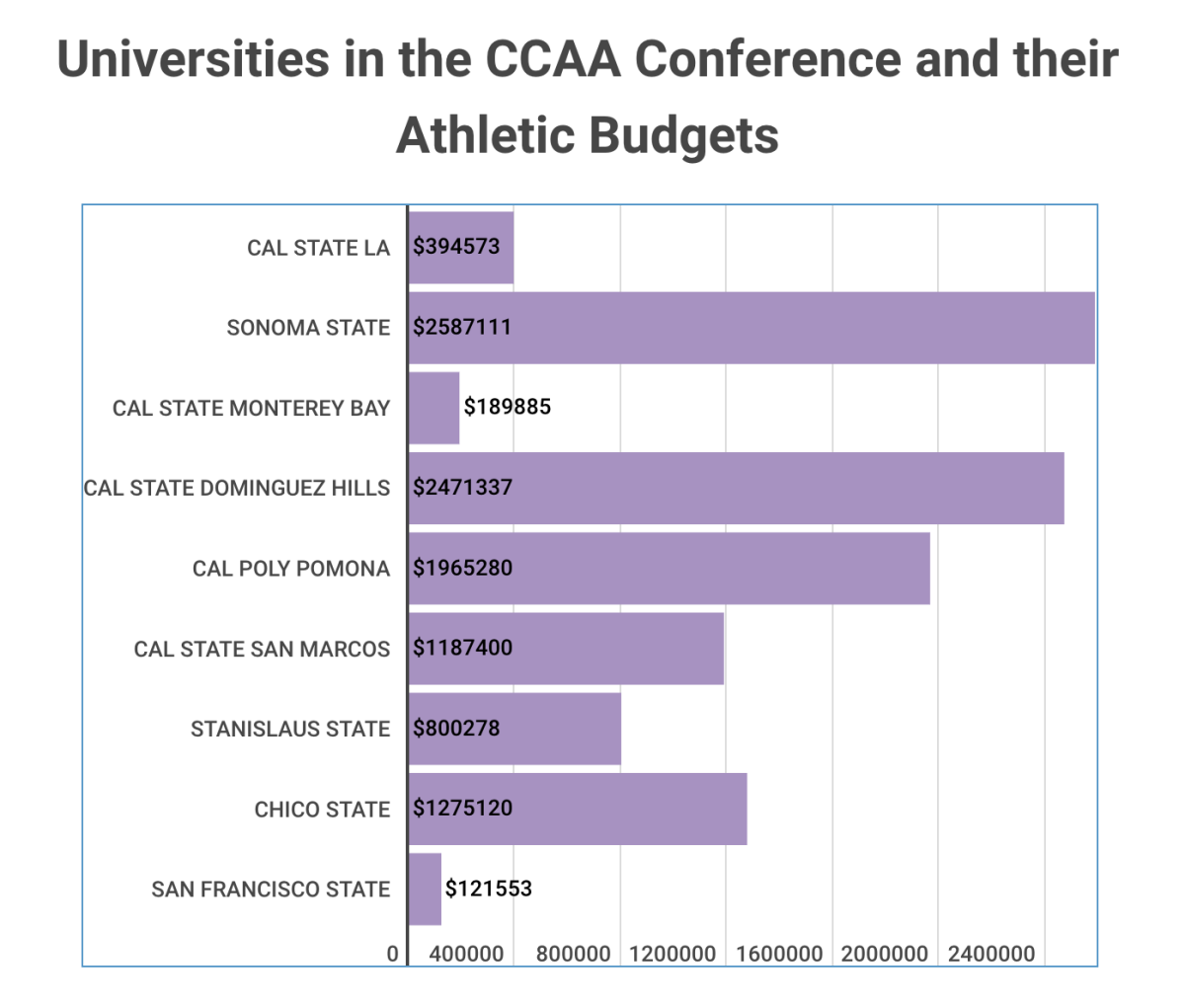
Coach and Player Perspectives
The majority of college athletes and coaches are motivated not by a desire for attention but by their passion for the game they play and coach. However, that doesn’t mean they don’t love and appreciate the support they receive from the students, faculty, administration and the greater community. After all, these are some of the most important principles established within a team of any kind –– community and support.
SFSU does not have a huge reputation for a behemoth amount of community support, whether that be on or off campus. Athletics can sometimes get overshadowed by other interests of students. For schools where athletics isn’t prominently featured on campus, even simple word-of-mouth can make a significant difference.
Tony Schifano, head baseball coach for the Gators, emphasized that one of the most effective marketing strategies for increasing game attendance and overall presence is word-of-mouth, aside from utilizing social media.
“We have to spread the word. San Francisco State is a destination school because we have such a wonderful city that our campus sits in,” Schifano said. “At the end of the day, there are a lot of students [who] commute and a lot of students are online. They’re getting onto campus and they’re getting off campus quickly.”
According to SFSU’s strategic enrollment management plan for 2022-2027, 88.5% of students are commuters and 11.5% of students are residential.
In terms of getting the word out to the community, hosting and playing in special games, such as a fundraising game for VsCancer, a nonprofit fundraising campaign under the Pediatric Brain Tumor Foundation or summer kids camps also plays a part.
Sometimes, getting the word out means a bit of footwork and getting hands-on to connect with the SFSU student body.

Vince Inglima, the men’s basketball head coach, said he encourages his players to wear their gear on campus –– even giving them flyers with their game schedule on them to pass out throughout the year.
“We do that a fair amount. (For instance,) the first day of school we were out in the quad taking pictures, handing out our schedule cards that I had made, trying to get followers on our Instagram because we do a lot of social media outreach,” Inglima said.
“There’s not a department (here) that has 10 people whose job is to get people to come to games,” Inglima said “It’s kind of an all-hands-on-deck kind of deal and if you want something done right, you gotta make it happen. That’s kind of our attitude toward it.”.
When they get the word out specifically this way, it works.
“Our opening game we played Dominican here and we don’t have a huge gym, but it was mostly full because we made that effort to get the word out,” Inglima said. “That’s step one. People got to know that there’s a game happening and so we kind of take that on ourselves to do the best we can to let them know.”
Aidan Murtaugh, a sophomore cross country and track and field runner, said that most of the time, he doesn’t think many students are aware of different athletic-related events going on –– let alone the different sports teams that are on campus. However, he mentioned that if people knew more about them, despite factors such as being a commuter school or the numerous other events on campus, a significantly larger number of individuals would attend.
“I don’t think many students are aware of the sports that we have and their schedules. Some students might not even know we have a wrestling team or a track team, for instance, but if they do, I think their willingness would be there,” Murtaugh said. “(Also) other people just don’t know when and where the games are, which is the second hurdle, so those are the two difficulties we face.”
He said it’s a matter of getting it on people’s radar.
Murtaugh previously attended Hillsdale College and ran on their cross-country team. He returned to San Francisco for personal reasons and eventually transferred to SFSU. He said financially, athletically and academically, it just made sense to attend SFSU. At his previous college, the most well-known sports facility they had was the indoor track, which attracted a lot of spectators and schools to compete in or watch events.
“I think our facilities at SF State are state of the art,” Murtaugh said. “The sports-specific facilities might be a little hard to notice [in terms of] access. The gym is probably at a glance, like the shortest building on campus and it’s amid a bunch of other academic buildings, so it’s probably easy to overlook it.”
Murtaugh says the location of the sports facilities on campus is different compared to other universities.
“Whereas at other universities, especially top tier universities, the athletic facilities almost have their whole half of the campus and it’s blatantly obvious that that’s where the athletic teams practice, that’s where the competitions occur,” Murtaugh said.
He stated figuring out a way to make the athletic facilities more apparent could contribute to the reputation of SFSU athletics. In terms of track and cross country, he mentioned the landscaping of SFSU, its nature-esque vibe should be used to our advantage.
“I think our track is a little nest within campus. You walk down the stairs and it feels like you’re in a different place –– not on some college campus,” Murtaugh said. ”You’re surrounded by trees and I think advertising that and really showcasing the strengths of our facilities like the nature aspects of the track would be a great way to start with recruiting and getting spectators out there.”
In terms of recruiting at SFSU, one of the issues coaches have to keep in mind is the cost of living. According to Rent Cafe, the cost of living in San Francisco is 25% higher than the state average and 76% higher than the national average. Housing alone is 202% higher than the national average and 50% higher compared to the state average. Division II schools do not give out full scholarships, so one way or another student-athletes are paying out of pocket for school.
Inglima can attest that it matters when recruiting.
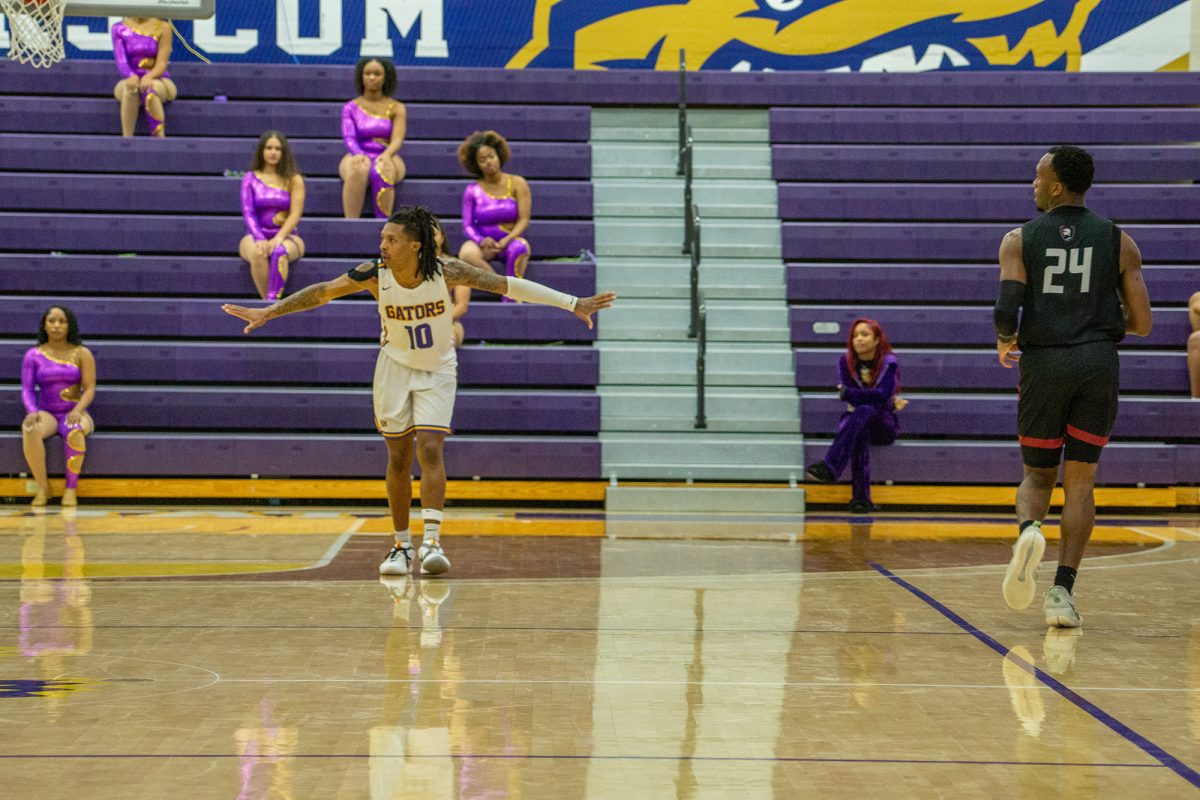
“It plays a huge role,” Inglima said. “We play in conference with all Cal State universities, so all of our tuition is basically the same. There’s small variants in tuition costs between the schools but housing cost is dramatically different. Now, if you’re talking about living in the dorms, even that’s relatively close between each place,” said Inglima.
Recently, the men’s basketball team played in Turlock, California at Stanislaus State. Coach Inglima referenced how cheap the apartments were just across the street from the campus. He mentioned that for one’s own room and bathroom there, it is at least $1300 cheaper.
Out of 448 cities in California, Turlock ranks at 348 in terms of how expensive it is compared to other cities in the state, according to the Economic Research Institute. San Francisco ranks number 1 out of 448 cities on that list and is ranked the third most expensive city in the nation.
Inglima mentioned that if he were to extend a scholarship to a student-athlete and that scholarship was to be compared to a scholarship from Stanislaus State, matching their full offer would require doubling it with some additional funds.
“That’s where the real challenge comes for us, obviously that plays an impact,” Inglima said. “I’m not gonna win a bidding war with any other program –– that’s the game. Everyone that comes here is not coming here because our financial package was better than whatever else they got offered. Our goal is to offer something beyond that in some way.”
Inglima mentioned that there are student-athletes who will choose to come to San Francisco instead of Turlock (California State University, Stanislaus), and vice versa, for reasons beyond financial considerations. He emphasized that when you are in a location like San Francisco, it becomes a part of the recruiting game, and it’s about discovering one’s niche within the recruiting world.
Alicia Reid, the head coach of the softball team, said that to cover all bases up front, she gives her potential recruits a cost of living estimate.
“After our first phone call with recruits that I’m serious about moving forward with, I have an estimate of cost breakdown,” Reid said. “‘Here’s tuition, here’s [an] estimate for transportation. If you have a car, if you don’t.’ The one thing they can be flexible with is dorms – if you’re living on campus or off campus.”
Reid said this helps recruits get an idea of what living on or off campus would look like before any scholarship money is offered.
San Francisco Culture
San Francisco is a hub for entertainment, athletics, technology, landscape and food. From miles of dunes emerged a city that stands as one of the most unique and diverse in the country in every conceivable way.
San Francisco and the greater Bay Area possess a rich athletics culture.
There were previously six major sports teams in the Bay Area –– the Oakland A’s, Golden State Warriors, Oakland Raiders, San Francisco Giants, San Francisco 49ers and the San Jose Sharks. Now, only four remain with one Women’s National Basketball Association expansion team in the works to be added to that list. The Raiders moved to Las Vegas and the A’s will soon follow suit.
Reid mentioned that the city and its offerings have aided in recruiting.
“It’s been a huge advantage and it could be seen as a disadvantage at times in terms of recruiting,” Reid said. “That’s the one thing I always tell recruits and my freshmen, ‘Look, you should never be bored. If you’re bored, you’re just sitting in your dorm room not doing anything because there’s so many things to do –– so much food to go explore.’ If you have a car, you just go 20 minutes in either direction and you’re experiencing a ton, not just even right here in our bubble.”’
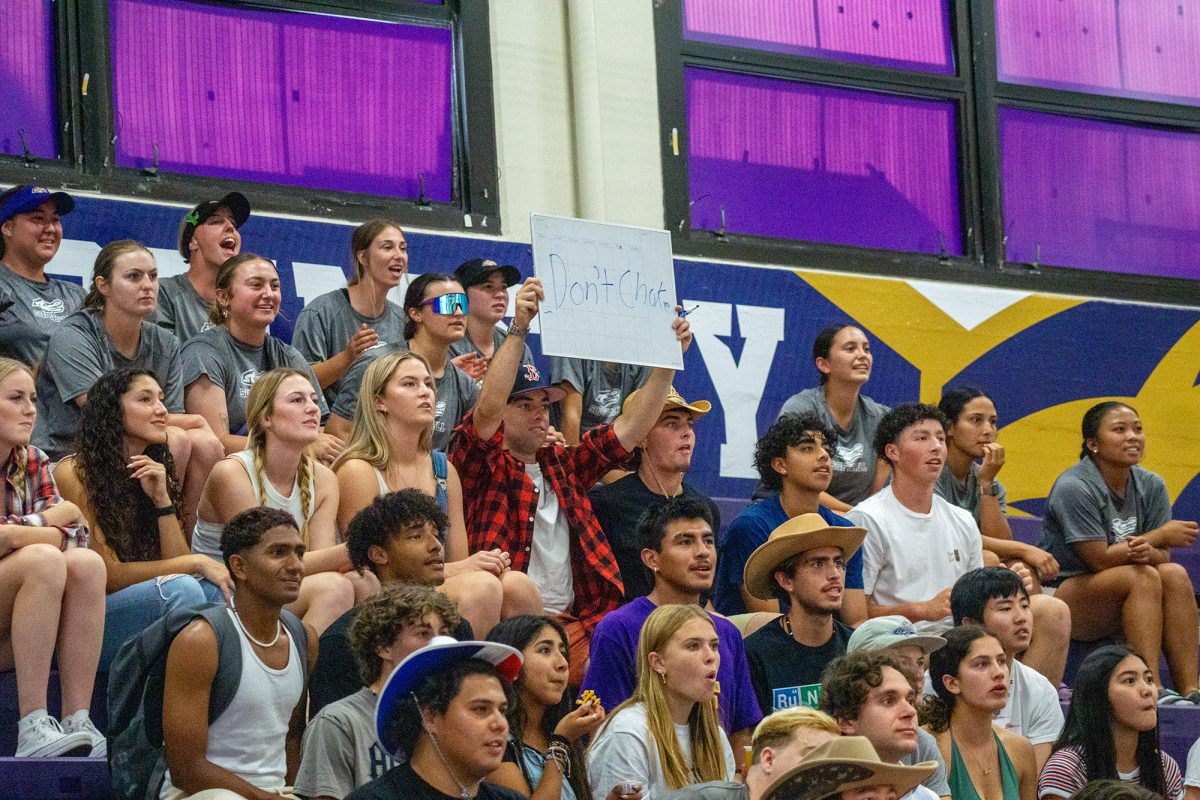
Reid expressed her enjoyment of live music, highlighting the added benefit of being able to experience it on any given night after work without having to return home late. However, she knows the fast pace of San Francisco can be seen as a disadvantage.
“Then, you have the flip side of that,” Reid said. “Maybe some people who grew up in the country –– they’re intimidated by so much. They have the idea that we live downtown and no, campus isn’t downtown. We’re not in skyscrapers and by one-way streets. It’s there if you want it, but you don’t have to go experience that.”
Reid said sometimes it’s just as simple as getting them to experience the campus to realize the city is not as overwhelming as it may seem.
The women’s softball team recently attended a women’s leadership and career in baseball event, hosted by the San Francisco Giants. Reid said it was great for them to have professional sports exposure in the various job opportunities.
“It’s awesome to have in your back pocket that you might not necessarily have a different area because you know they’re reaching out to us constantly about the things that they have and they want student-athletes,” she said.
Murtaugh said that he believes it holds as a slight disadvantage being local to popular professional sports teams but also colleges as well.
“Not only do we have to compete with the pro teams but they’re so many other universities close by. University of San Francisco, for instance, is a Division I team so they attract some of the best collegiate teams across the nation and it is a lot to compete with when you’re a modest D2 (Division II) program, like most of San Francisco State’s programs are it doesn’t offer much that the other teams or other organizations don’t offer and then some,” Murtaugh said.




